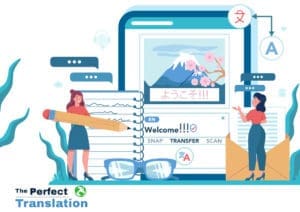 Accuracy and compliance are critical when submitting documents to the United States Citizenship and Immigration Services (USCIS). If you’re submitting a document that’s not in English – such as a birth certificate, marriage certificate, or academic transcript – it must be accompanied by a certified translation. But what exactly makes a translation certified in the eyes of USCIS? Let’s break down what your certified translation should include so your submission is accepted without costly delays – or even rejected.
Accuracy and compliance are critical when submitting documents to the United States Citizenship and Immigration Services (USCIS). If you’re submitting a document that’s not in English – such as a birth certificate, marriage certificate, or academic transcript – it must be accompanied by a certified translation. But what exactly makes a translation certified in the eyes of USCIS? Let’s break down what your certified translation should include so your submission is accepted without costly delays – or even rejected.
What USCIS Requires
USCIS follows strict standards for any document translations. According to 8 CFR 103.2 (b) (3), any document in a foreign language must include a complete English translation and a certification from the translator affirming the translation’s accuracy and completeness. The certification must also include confirmation that the translator is competent to translate from the foreign language into English.
This means that simply running your document through an online translator or having a bilingual friend translate it doesn’t meet USCIS requirements. A professional, certified translation must follow a formal structure that demonstrates credibility and precision.
Key Components a USCIS-Certified Translation Should Include
To be accepted by USCIS, a certified translation should include the following elements:
1. Complete Translation of the Document
USCIS does not accept partial or summary translations. Every word of your original document must be translated. This includes stamps, signatures, handwritten notes, seals, and even marginal text. If something is illegible, the translator should note it as illegible rather than omitting it.
2. Translator’s Certification Statement
Every certified translation for USCIS should include a signed certification statement. While USCIS doesn’t provide a specific template, the certification should contain:
- A statement affirming that the translation is complete and accurate.
- The translator’s full name.
- The translator’s signature.
- The date of certification.
- The translator’s contact information.
A common and accepted format for the statement is: “I, [translator’s name], certify that I am fluent in English and [language], and that the above/attached document is a complete and accurate translation of the attached original document.”
3. Translator Qualifications
While the translator doesn’t need to be USCIS-certified, they do need to be qualified. A professional translator or reputable translation company like The Perfect Translation will have verified linguistic credentials and experience with legal or immigration documents. Using a recognized translation service helps establish trust and compliance with USCIS regulations.
4. Matching Format and Layout
Your translated document should closely mirror the original document’s structure and layout. This helps USCIS officers easily compare both versions and verify consistency. Professional translators replicate tables, headers, and seals to maintain authenticity.
5. Signed Certification Page
Your certified translation should include a signed certification statement. This can be signed electronically or by hand by the individual who completed or verified the translation. USCIS will reject any translations that lack a signature or appear to be automated or incomplete.
Why Professional Certified Translations Matter
Submitting documents that don’t meet USCIS requirements can cause significant delays, requests for evidence (RFEs), or even denial of your application. Using a professional translation service like The Perfect Translation ensures your certified translation includes everything USCIS requires. Our certified translators are trained to accurately handle official documents, paying close attention to linguistic nuances and formatting requirements.
We also maintain a rigorous quality assurance process that lets us provide a 100% guarantee that our certified translations will be accepted once submitted to USCIS.
Common Mistakes to Avoid
Many applicants run into setbacks because of easily avoidable translation errors. To help prevent that, keep in mind that USCIS will not accept machine translations like Google Translate. Also, don’t let a friend or relative translate your documents unless they’re a qualified professional. Make sure your translation includes all seals and handwritten notes from the original document. Your certified translation should also include a signed and dated certification page.
The Perfect Translation Provides Everything Your Certified Translation Should Include
For USCIS applications, a certified translation can’t just convey meaning – it has to meet strict legal and procedural requirements. At The Perfect Translation, we specialize in preparing certified translations that meet USCIS acceptance criteria the first time. We even offer a 100% USCIS acceptance guarantee. Whether you’re applying for a green card, naturalization, or a visa, our certified translators provide peace of mind by ensuring your documents meet all requirements and are ready for review. Contact us today for a free quote.

Leave a Reply